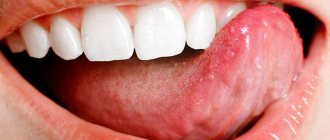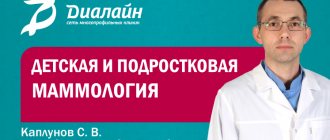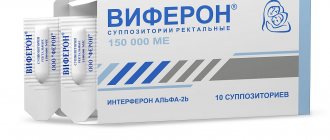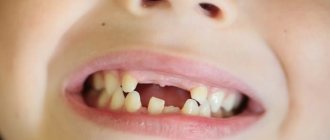Almost no acute respiratory disease in childhood occurs without inflammation of the mucous tissues of the pharynx. The condition is accompanied by severe discomfort, pain, soreness and difficulty swallowing, and often the baby’s voice becomes hoarse and deaf. To effectively treat a throat in children, including at home, parents need to know the mechanism of development of the pathology and methods that can help the child without harm to his health.
Medical specialists today will tell you how to properly help children with a sore throat, when you need to quickly seek treatment from doctors, and will help you understand other important issues.
general information
The pharynx, which experts divide into three parts (nasopharynx, oropharynx and laryngopharynx), is the front line of local immunity. It is she who is the first to encounter external blows from pathogens: viruses, bacteria, allergens, fungi. The mucous membranes of the pharynx contain many nerve endings, which is why any, even minor, inflammatory process leads to the appearance of a variety of unpleasant symptoms.
If the inflammation has gone further and affected neighboring organs, then in such situations, in addition to complaints of sore throat and sore throat, the baby experiences fever, lethargy, cough, runny nose or other manifestations of a respiratory infection. At the same time, a “red throat,” which many mothers have repeatedly heard about from an observing pediatrician, may mean nothing and not require treatment at all, especially if the child himself has no complaints, and the redness worries only the parents.
Important: a sore, red throat in a child is not a diagnosis, but only a symptom of a specific infection that must be determined before starting treatment. Doctors should diagnose and prescribe appropriate therapy.
What is a sore throat?
Sore throat, or tonsillitis, is a disease in which an inflammatory process occurs in the palatine tonsils, or, in other words, tonsils. Tonsils are a collection of lymphoid tissue. They perform the most important function in the body - protective. If bacteria or viruses enter the body during breathing or through food intake, the tonsils “meet” them first, neutralize them and remove them from the body. As long as the number of pathogenic microorganisms does not exceed the permissible norm, the tonsils easily cope with their task, but as soon as the microorganisms become active, the tonsils begin to work doubly intensely, as a result of which an inflammatory process occurs in them. The body begins to produce an increased number of white blood cells to cope with enemies. And such a “fight” lasts three to four days until the pathogens are eliminated. But the situation is complicated by the fact that inflammation is accompanied by swelling, enlarged tonsils and other unpleasant symptoms, which will be discussed later.
Possible causes of sore throat in children
The most common culprit of illness in childhood is acute viral respiratory infections or ARVI. The most common among them are:
- flu;
- adenoviral infection;
- coronavirus infection;
- herpetic infection;
- Infectious mononucleosis.
There are a lot of potentially dangerous pathogens that can provoke:
- pharyngitis - an inflammatory process affecting the tonsils of the pharynx;
- laryngitis – inflammation of the mucous tissues of the larynx and vocal cords;
- tracheitis – infection of the trachea;
- adenoiditis - inflammation of the pathological growth of the nasopharyngeal tonsil.
All conditions are accompanied by soreness and soreness in the throat of varying degrees of intensity. In the vast majority of cases in childhood, these diseases are viral in nature.
The most dangerous are bacterial infections in a child: they are accompanied by severe sore throat and require competent professional treatment. These include:
- tonsillitis or acute tonsillitis - inflammation of the tonsils;
- diphtheria is a severe infectious disease that affects the mucous tissues of the nose and oropharynx against the background of general severe intoxication;
- Scarlet fever is a pathology characterized by a rash, high fever, and extensive inflammatory processes on the palatine and pharyngeal tonsils.
Other possible causes of sore throat and red throat in children are:
- allergic reactions;
- prolonged stay in a room with dry, hot, dusty air;
- colds caused by general or local hypothermia of the body;
- mechanical damage to the mucous membranes resulting from the ingestion of sharp, poorly chewed pieces of food or foreign objects.
Sometimes pain is the result of parental attempts to carefully examine the child’s sore throat using improvised means or as a consequence of home treatment methods with folk recipes and inappropriate medications.
What are the complications?
Complications after an illness can be quite serious. The most common complication is rheumatism. This means that the pathogen has penetrated the heart and joints. To avoid cardiac rheumatism - myocarditis, and sometimes bacterial endocarditis, it is necessary to minimize the child’s physical activity during the illness.
Another common complication is kidney dysfunction and inflammation - glomerulonephritis.
By moving towards the brain, the pathogen can provoke inflammation of its membrane - meningitis. This disease is extremely difficult to treat, and its consequences for the child’s body are irreparable. If the disease is not treated, there is a high probability of death.
The occurrence of parathonsillar and parapharyngeal abscess, chronic tonsillitis, adenoids, hypertrophy (enlargement) of the palatine tonsils, otitis media, conductive hearing loss is only an incomplete list of the consequences of improper or delayed treatment of tonsillitis.
Symptoms
The following symptoms will help you understand that your child really has a sore throat and needs real treatment:
- refusal to eat and drink;
- obvious redness of the pharynx, the appearance of white, yellowish spots on the arches of the palate;
- swelling and increase in the size of visible areas of the tonsils;
- hoarseness, hoarseness;
- sore throat.
Associated signs of the disease may include:
- increased body temperature;
- weakness, drowsiness;
- runny nose;
- headaches and joint pain;
- decreased appetite;
- increased salivation;
- cough.
In most cases, with such symptoms we are talking about banal ARVI, but there are conditions that require immediate consultation with a doctor. It is necessary to immediately show the child to a specialist if there are:
- high temperature accompanied by a sore throat and no runny nose;
- any skin rash with high fever or headache;
- shortness of breath, difficulty breathing;
- complete refusal to eat, inability to give the baby something to drink;
- a thin film covering the tonsils and palate;
- small elements of the rash and pinpoint hemorrhages that appear on the walls of the pharynx;
- difficulties with swallowing and speaking.
Such signs may indicate the development of serious diseases, for example, streptococcal sore throat, diphtheria, which in the future can cause complications on the heart, liver and other important systems of the body.
Diagnostics
Examination and treatment of throat diseases in children is carried out by pediatricians and specialized specialists: otorhinolaryngologists, infectious disease specialists, allergists.
Diagnosis begins with examination of the oral cavity, pharynx and tonsils. For this, doctors use special devices: nasopharyngeal and laryngeal speculum, pharyngoscope, etc. In parallel with the visual assessment of clinical symptoms, the doctor interviews the young patient and his parents about contact with infectious patients, finds out the characteristics of the baby’s health and lifestyle, and clarifies previous diseases and the level of vaccination.
To clarify the diagnosis, specialists may prescribe:
- video endoscopy of the larynx and nasopharynx;
- laboratory blood tests;
- microflora smear from the larynx;
- determination of bacterial resistance to certain antibacterial components;
- allergy tests;
- X-ray of the nasopharynx.
In complex cases, additional specific studies may be required, as well as CT or MRI.
Literature
- T.I. Garashchenko. Sore throats in children and their systemic antibacterial therapy. Consilium Medicum. Pediatrics. (Add.) 2008; 02: 14-20.
- E. I. Krasnova, N. I. Khokhlova. Differential diagnosis and treatment tactics for acute tonsillitis (angina) at the present stage. Attending physician No. 11/2018; Page numbers in the issue: 58-63.
- Clinical recommendations (treatment protocol) for providing medical care to children with tonsillitis (acute streptococcal tonsillitis), FSBI NIIDI FMBA of Russia, 2015.
- Tatochenko V.K.. Once again about antipyretics. Issues of modern pediatrics. Volume 6 No. 2 2007, p. 128-130.
- Instructions for the drug HEXORAL® SOLUTION.
- Instructions for the drug HEXORAL® in AEROSOL form.
- Instructions for the drug HEXORAL® TABS.
- Instructions for the drug HEXORAL® TABS CLASSIC.
- Instructions for the drug HEXORAL® TABS EXTRA.
Up to contents
Treatment of sore throat in children
Therapy is selected taking into account the causes of the disease and the current condition of the little patient at the time of contacting the clinic. Conservative tactics are generally used; surgical intervention is rarely required for certain indications, for example, for grade 3 and 4 adenoids, as well as for opening and draining large abscesses.
To ensure that a child’s throat is treated as quickly and effectively as possible, experts prescribe:
- various medications, the action of which is aimed at eliminating the infectious pathogen, stopping an allergic reaction, pain relief, etc.;
- physiotherapeutic procedures;
- washing and gargling with special solutions.
Medicines for treating a sore throat may include:
- painkillers;
- antipyretics;
- antibiotics;
- anti-inflammatory drugs;
- hormones;
- antihistamines;
- vitamin and mineral complexes.
A large role in treatment is also played by nutritious but gentle nutrition, organization of the correct microclimate in the baby’s room, and parental measures of symptomatic assistance.
What to do if a child has a sore throat at home?
Key point: children, especially younger preschoolers, should not be given any medications without a doctor’s permission, and in no case should traditional medicine methods be used on children, even if they are reputed to be effective.
To relieve a sore throat and normalize the child’s general condition, it is advisable to:
- limit the child’s physical activity (outdoor games, sports, etc.);
- normalize the air parameters in the room where the baby lives, maintaining the temperature no higher than +22 degrees and humidity no lower than 40%;
- regularly ventilate the room;
- do not force food, especially fatty, fried, spicy and pickled foods;
- Give plenty of any age-appropriate warm drinks (tea, compote, still water);
- gargle with saline solutions or decoctions of medicinal herbs (provided that the child knows how to do this);
- dissolve any lozenges in the mouth.
It is strictly forbidden to:
- lubricate the throat with alcohol-containing solutions or make alcohol compresses;
- irrigate the pharynx with medications in the form of sprays for children under 3 years of age;
- apply “grandmother’s” methods of treatment in practice: treating mucous membranes with kerosene, iodine and similar dubious advice;
- try to remove film and plaque using improvised methods.
Such measures are obviously harmful and can not only aggravate the baby’s situation, but also lead to other, no less unpleasant and dangerous conditions, ranging from burns of mucous membranes to an acute allergic reaction.
Prevention
To reduce the risk of throat diseases, doctors recommend:
- hardening, adequate physical development, good nutrition and timely vaccination;
- do not abuse medications, especially antibiotics, as self-medication;
- walk more with children in the fresh air;
- teach children to have a healthy lifestyle and exercise;
- promptly seek medical help for the treatment of acute and chronic diseases;
- avoid prolonged hypothermia;
- do not overheat children;
- limit communication with other children and relatives during seasonal outbreaks of ARVI and influenza.
You can learn more about the treatment regimen for throat diseases and get qualified help from pediatric specialists at the SM-Doctor clinic. Reception is carried out daily. You can sign up by phone, on the website, or in person at the center’s reception desk.
How often do children get sick?
Children under 5 years old experience up to 8 episodes of ARVI per year1. In kindergartens, the morbidity rate is especially high in the first and second year of attendance - 10-15% higher than at other times.
The number of visits to pediatricians with ARVI increases from September to April, and the peak incidence occurs from February to March. In the summer months, the incidence decreases by approximately 3-5 times.
Children are especially vulnerable to influenza. The reason for this is insufficiently developed immunity. The spread of the virus in children's groups (in schools, kindergartens, boarding schools) is occurring rapidly.
Question answer
My husband insists that a child with a sore throat can be given ice cream, but I’m afraid. Who is right?
Both are right. The cold from the ice cream can act as a pain reliever, and a happy baby will recover faster. However, if before a sore throat the child did not eat ice cream or drink cold drinks, then contact of the mucous membranes of the pharynx with cold can aggravate the condition and cause an additional inflammatory process.
What is the connection between the throat and teeth? The pediatrician referred us to the dentist.
Straight. Caries and other dental diseases not only weaken the defense of local immunity, but are also a source of bacteria. For frequently recurring acute respiratory viral infections and other diseases affecting the nasopharynx, one of the recommendations of a competent pediatrician will definitely be a referral to a dentist.











